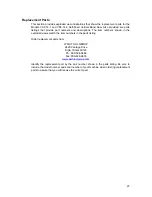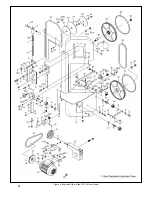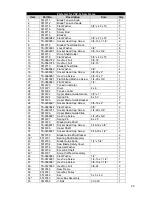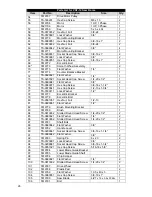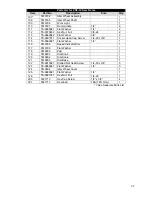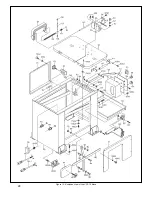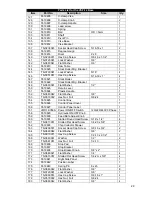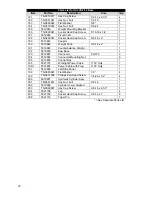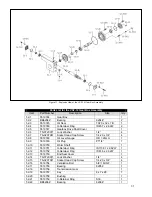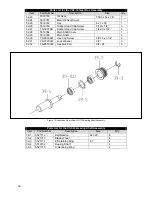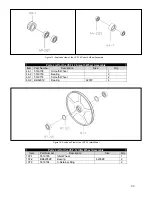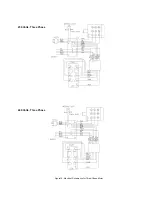
21
Troubleshooting
Problem
Probable Cause
Suggested Remedy
Excessive Blade
Breakage
1. Material is loose in the
vise.
2. Incorrect speed or feed.
3. Blade pitch is too coarse
for the material.
4. Incorrect blade tension.
5. Saw blade is in contact
with the work piece before
the saw is started.
6. Blade rubs on the wheel
flange.
7. Misaligned blade guides.
8. Cracking at the weld.
1. Clamp work securely.
2. Check
the
Machinist’s
Handbook
for the
speed/feed appropriate for
the material being cut.
3. Check
the
Machinist’s
Handbook
for the
recommended blade type.
4. Adjust the blade tension
just to the point where the
blade does not slip on the
wheel. (Refer to Figure 3
Item 3).
5. Start the motor before
placing the saw blade
against the work piece.
6. Adjust the blade tracking.
(See Blade Tracking
Adjustment).
7. Adjust the blade guides.
(See Blade Guide Bearing
Adjustment).
8. Use a longer annealing
cycle.
Premature Blade
Dulling
1. Blade pitch is too coarse.
2. Blade speed is too high.
3. Inadequate feed pressure.
4. Hard spots in the work
piece.
5. Scale on/in the work piece.
6. Work hardening of material
(especially stainless steel).
7. Insufficient blade tension.
8. Operating the saw without
pressure on the work
piece.
1. Use a finer tooth blade.
2. Use a lower blade speed.
(See Figure 5).
3. Decrease the feed
pressure. (See Figure 3
Item 1.3).
4. Increase the feed pressure
(hard spots). (See Figure 3
Item 1.3).
5. Reduce the blade speed
and increase the feed
pressure (scale). (See
Figure 3 Item 1.3 and
Figure 5).
6. Increase the feed pressure.
(See Figure 3 Item 1.3).
7. Increase the tension to the
proper level. (See Figure 3
Item 3).
8. Do not run the blade in/on
the material at idle.
Blade Is Twisting
1. Blade is binding in the cut.
2. Blade tension is too high.
1. Decrease the feed
pressure. (See Figure 3
Item 1.3).
2. Decrease the tension on
the blade. (See Figure 3
Item 3).

















